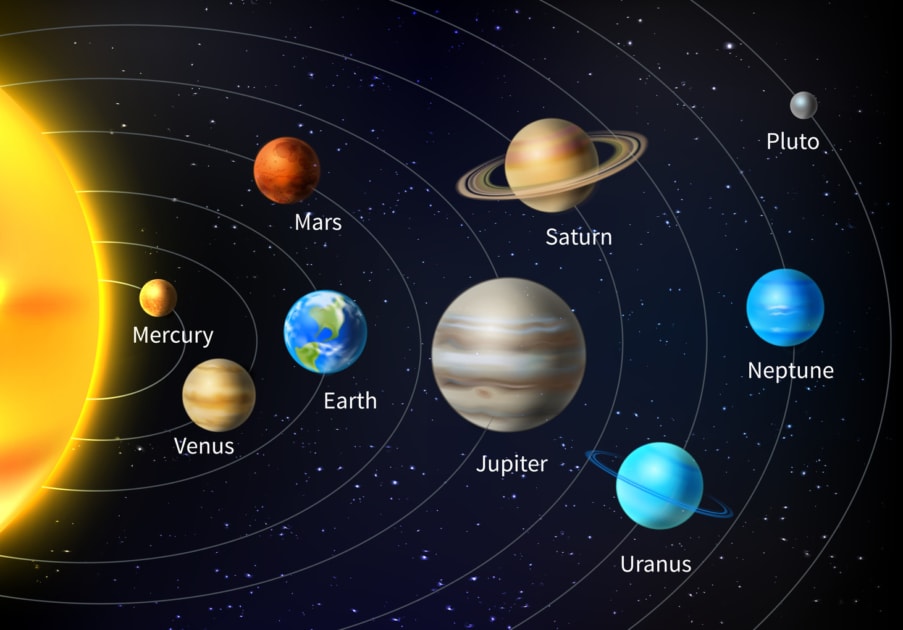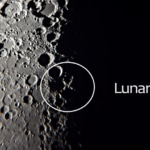Petite Pluto
It may have had an identity crisis for a while, but Pluto is a planet again, and it's pretty interesting. Learn more!

Poor Pluto. It used to be a planet, then it wasn’t for a while. Even if it’s not as big as some of the other heavyweights in our Solar System, though, it still has some remarkable characteristics. Read on to learn more about the object known as our ninth planet:
– Pluto was discovered by Clyde Tombaugh on February 18, 1930, at Lowell Observatory in Flagstaff, Arizona. Prior to its discovery, the Lowell Observatory’s wealthy founder, Bostonian Percival Lowell, had searched for years for a possible ninth planet, which he called “Planet X.” Pluto’s existence was first theorized in the 1840s, shortly after the discovery of Neptune, when astronomers began to notice the newly discovered eighth planet behaving in ways that suggested interaction with an object beyond its orbit.
– For 76 years, Pluto was considered the ninth planet in our Solar System. The International Union of Astronomers downgraded it to a dwarf planet in 2006, after a series of similar bodies, one of which is bigger than Pluto, were discovered in its neighborhood. It was reinstated in 2014 after Harvard astrophysicists declared it deserved to remain a planet.
– Unlike the gas giants that lord over the area of our Solar System between Mars and the Kuiper Belt, where Pluto and at least two other dwarf planets reside, Pluto is composed primarily of rock and ice. Scientists don’t know for certain, but believe that anywhere from 50-70% of its mass is a rocky core. The rest is made up of an icy coating. Many unknown details about Pluto will become clearer in 2015, when New Horizons, the first spacecraft sent to explore it, arrives there.
– Pluto is estimated to be about 1433 miles in diameter, making it roughly two thirds of the size of our own Moon, and about one fifth the size of the Earth. When it was still recognized as a planet, it was the smallest in our Solar System. It is now recognized as the second largest known dwarf planet.
– It takes Pluto about 248 Earth years to orbit the Sun, and about six Earth days to rotate once on its axis. While most planets’ orbits around the Sun are more or less circular, Pluto’s is unusual. It is oval in shape, and tilted on an angle from the rest of the Solar System. Because of this, it occasionally moves inside Neptune’s orbit, sometimes brining it closer to the Sun than Neptune.
– Pluto has three moons, Charon, Nix, and Hydra. The largest and closest of the three, Charon, was discovered on June 22, 1978, by astronomer James Christy, almost 50 years after Pluto. The other two were discovered in 2005. Charon is believed to be more than half the diameter of Pluto. Because Charon is so large in comparison to Pluto, the two bodies actually revolve around one another. For this reason, some astronomers have proposed upgrading Charon to the status of dwarf planet.
– Pluto was named for the Roman god of the underworld, in keeping with the tradition of naming planets after mythlogical figures. The name was suggested by Venetia Burney, an eleven-year-old girl from Oxford, England. The Lowell Observatory had received thousands of suggestions from around the world, but the astronomers who selected the name voted unanimously for Pluto.
– The average temperature on the surface of Pluto is about -380° F. Temperatures vary only slightly on this cold chunk of rock and ice, from about -360° F at the warmest to -400° at the coldest. Brr! And you thought your hometown was cold this winter!
– Pluto has a thin atmosphere made up of nitrogen, methane, and carbon monoxide. These gases come from the ice on its surface.
– Pluto is only visible with a very large telescope. It can be hard to identify. Because it is distant, slow moving, small, and dark, it looks a lot like a dim star (14th magnitude).

Jaime McLeod
Jaime McLeod is a longtime journalist who has written for a wide variety of newspapers, magazines, and websites, including MTV.com. She enjoys the outdoors, growing and eating organic food, and is interested in all aspects of natural wellness.






I was in Tucson area the spring of 2013,heard the observeatory charged 32 $ for use of telescope for 30 minute intervels ,. i’m looking for more info’ on same time of hobbies in the west and prices of said such,like station mentioned in Flagstaff,Az.—would love to look at planets at night viewings around western mts.,thanks–Philip mcdaris.